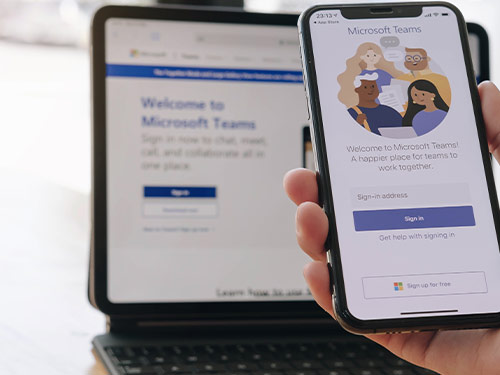I’ve never understood why companies are stingy with time off. When employees are burned out, it takes them 3 hours to do something that should take 30 minutes. Taking a few days, a long weekend, or a week’s vacation pays a company back 10-fold because employees come back refreshed, creative, and productive.
So it’s been nice to see so many organizations winding down the last week of the year and giving employees a much-deserved break between Christmas and New Year’s Day. That time off gives employees a great start to a new year.
Good leaders will keep an eye on burn out, and tell their employees and colleagues when it’s time to take some time. Often, people don’t realize they are suffering from burn out because they’ve become far too entrenched in their work to notice.
At Metrigy, we implemented “Agile Fridays” one year ago, and the policy has drastically reduced burnout while improving business metrics. Actually, it’s been one of the most successful HR moves I’ve ever experienced. The nature of our business requires us to be on the phone/video most hours of most days. So, it’s difficult to catch up–or even take a mental health break.
On Fridays, we do our best not to schedule calls–and let employees decide how they need to spend the day. Did they work a long week and simply need the day to run errands? Great. Do that, but be available via cellphone if needed. Do they have some past-due tasks? Great, spend half the day catching up on tasks, and take off early. The point is, the policy of Agile Fridays treats people like adults and lets them decide how to best use their time. In our Employee Handbook, the policy is defined like this:
- Under this policy, we do not schedule calls on Fridays (exceptions are allowed at the discretion of each manager/employee, or for an urgent client issue). You may take off on Fridays, but are expected to check email throughout the day, be available via cellphone in case you’re needed, and have access to your laptop within a reasonable period of time.
- If you cannot check email, be available if needed, or have access to your laptop for emergencies, then you must take a PTO day.
- You can use Fridays as you wish. If you need to catch up on your own work, plan for the next week, work part of the day, or not work at all, it’s up to you. We expect you to get your work done throughout the week, so if you’re taking off on Friday, that would mean you’ll need to work extra to make up that time.
- We will not track hours, but we will keep an eye on your output.
After one year, not one person has violated the spirit of the policy. We don’t micromanage people, but as stated, we pay attention to their work product. If anyone were to fall drastically behind on their work and use their Agile Friday to go to the spa, I would say something. But I haven’t had to; not one employee has exploited the policy in that way. Sure, we have had to reach out to people via cellphone occasionally on Fridays, and we have scheduled some calls. But overall, it’s been very manageable.
I went into this policy hopeful, but also realistic. I knew we may need to backtrack if it affected the business or our clients. (In fact, some of our clients have implemented similar policies and also have found huge success.)
But, the business has been more successful than we could have ever imagined. We are serving and growing our client base. We have had no employee turnover. People are happy and productive. (There’s no drama!) And our team has a solid work/life balance. Of course, many factors contributed to these results, but I attribute a measurable amount to the value of Agile Fridays.
As I do my Customer Experience research, one point that is validated over and over again is this: Happy employees = happy customers. When contact center agents are satisfied and turnover stays below 15%, customer ratings improve by 26%.
One big reason for we are even able to do Agile Fridays, of course, is thanks to technology and work-from-home. The Monday-through-Friday, 9-to-5 workday has long been fading. As long as people get their work done and keep their schedule updated, I don’t care when they actually do their work. Fortunately, mobile devices, cloud-based applications, (usually) fast Internet connectivity, and home offices have made this possible.
Other business leaders have asked me: “Do you think if people fully worked on Fridays, you would have generated a proportional amount of additional revenue?” My answer: Absolutely not. In fact, I think we would not have been as successful. I have seen nothing but positive changed with our team since giving them one flexible day a week. They are more responsible, more loyal, and more driven to succeed.
Give it a try! If properly managed, you should soon see success. Speaking of which, make sure you identify metrics you’ll measure, and then measure the before-and-after metrics. For example, we evaluated at employee turnover, employee productivity, sales, new clients, client satisfaction, and client project success. On all measures, Agile Fridays generated fantastic results.





